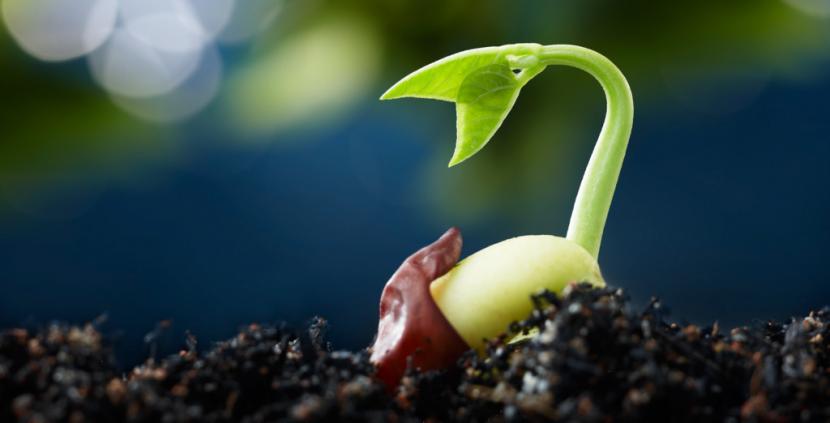
For many species, being cold for a few months is vital. Without it, they could hardly germinate and, if they did, their germination rate would be very low. When you live in an area with a temperate climate, where temperatures in winter remain between a maximum of 10 and a minimum of -6ºC (or lower), you can choose to sow the seeds directly in the seedbed and leave it out in the open to let nature itself be in charge of 'waking them up'; Nevertheless… the situation is complicated when the weather is warm or mild throughout the year.
For this reason, I am going to explain to you how to stratify seeds step by step. Do not lose detail.
What I need?
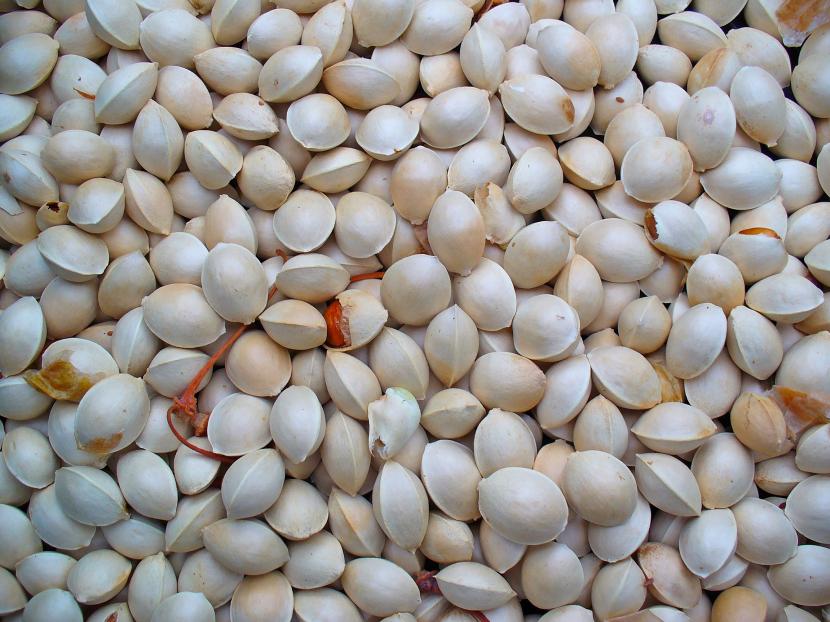
Ginkgo biloba seeds
The first thing we have to do is prepare everything that is going to be used. When you are going to artificially stratify seeds, that is, in the fridge, you need:
- Tupperware with lid: it is recommended that it be transparent in order to have better control of the seeds.
- Label: where you will put the name of the species and the date on which they proceeded to stratify them.
- Fungicide- Whether natural or chemical, the fungicide will prevent fungi from damaging our future plants.
- Substratum: I advise using a porous one, such as perlite or vermiculite. The seed itself will be in charge of feeding the seedling until the cotyledons (the first two leaves) fall off, so the substrate in this phase will only be used as an anchor.
- Seeds: of course, they cannot be absent. To know if they are viable, it is advisable to put them in a glass for 24 hours, so the next day you will be able to know which ones will in all probability germinate, discarding those that remain floating.
Step by Step: Stratify Seeds
Now that we have everything, it is time to start stratifying the seeds. For it, we will fill the tupperware with the chosen substrate. I have chosen to do a little experiment: I have filled it almost completely with volcanic clay (in the form of gravel) and I have added a thin layer of black peat.
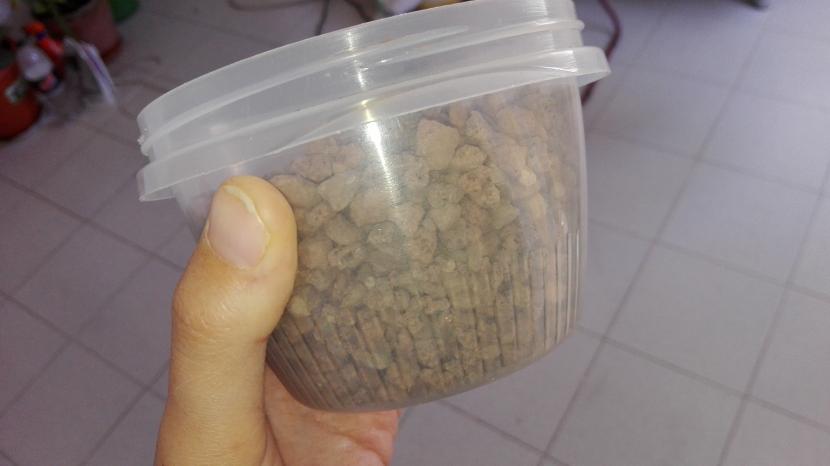
Here you can see better:
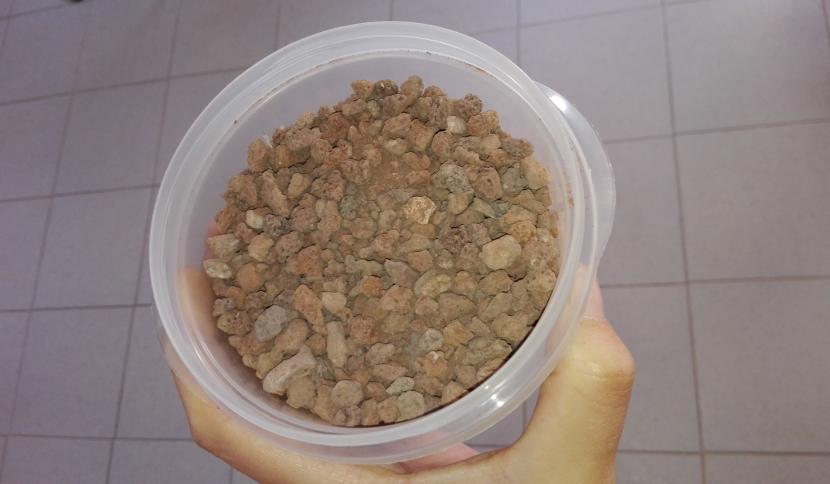
And now, the mob:
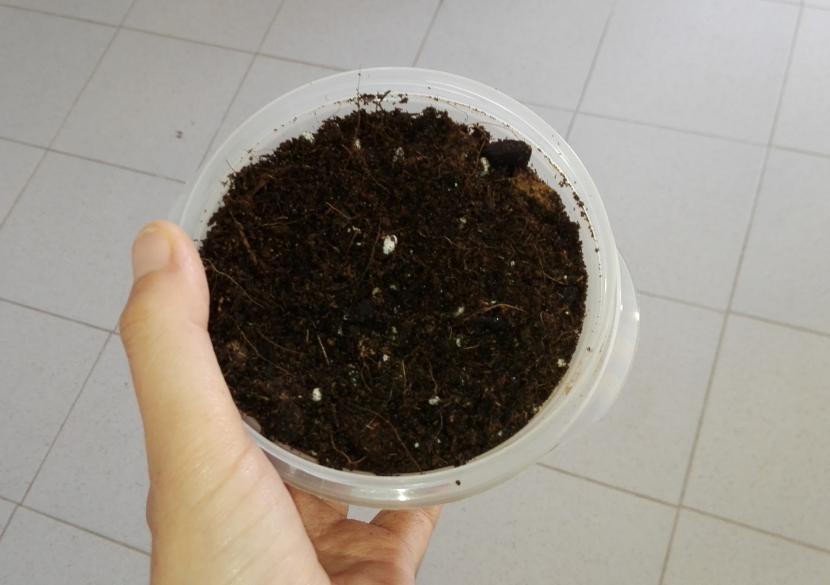
Finally, we have plant the seeds. As in habitat the earth and / or leaves would end up covering them, it is convenient that we do the same:
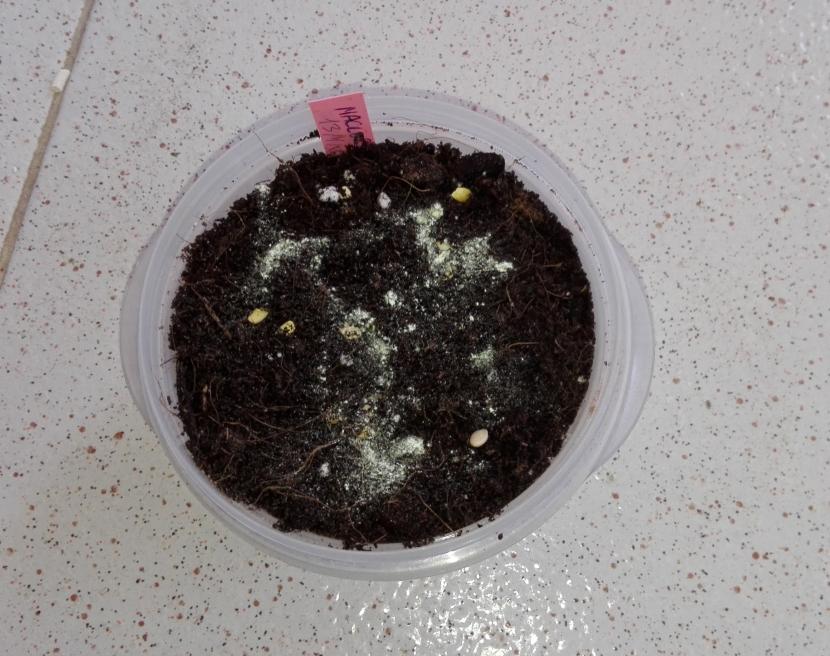
What would never happen in a forest is for someone to apply fungicide 🙂, but in cultivation we are interested in getting at least 90% of the seeds to germinate, so we will have no choice but to give them a preventive treatment. As you can see in the image above, I have added a pinch of fungicide powder (as if you were adding salt to the salad).
Then, we mix everything well and water. As the tupperware do not have holes, I advise you to water little by little to avoid accumulating too much water at its base (If this happens, it is convenient to discard it). And now, to put it in the fridge:
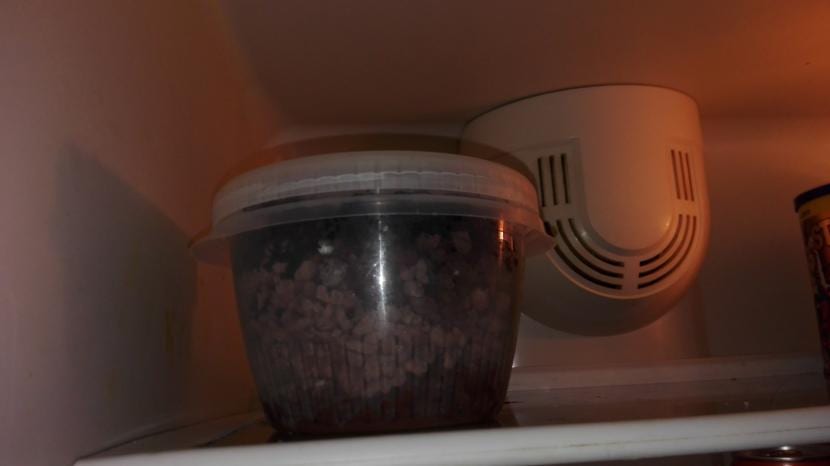
We do not know what your family will think of having a tupperware with seeds in the fridge (yes, my family has also looked at me strange. In fact, they have asked me the classic question "again?" 😉), but they will surely be surprised when they see the awakening of a new plant.
But our work does not end here. For 2-3 months we will have to check, at least once a week, that the substrate has not dried. Nor can we forget to open the tupperware for 5-10 minutes so that the air is renewed and thus avoid the proliferation of fungi.
What happens if fungi appear?
These fungus companions are very harmful to plants. Usually, when they show up, it's too late to do something. Hence, it is so important to do fungicide treatments from day one.
If you see fungi in your tupperware extract the seeds and give them a bath with chemical fungicide. Clean the container well and throw away the substrate. Only later will you be able to sow your seeds in it again, with new substrate.
Usually there are usually no problems. In fact, you should know that if the seeds are in a hurry to germinate, it is very likely that they do it in the tupperware. In the event that this happens, carefully remove it from it and plant it in a pot.
Artificially stratifying seeds is very easy and very useful when the weather is mild.
thanks i'm learning
Hi Monica, could you tell me what kind or brand is the fungicide you use? Thanks…
Hello Rocio.
Any fungicide will do you good.
I basically use preventatives, like copper or sulfur, or even cinnamon.
In case the seeds start to go bad, then I put a broad spectrum systemic fungicide on them.
A greeting.
Hello, I have read in several parts of stratification and it is the first time that I read that I open it so that the air is exchanged and it seems reasonable, but how often do I have to open it for the air? move nothing for a month (it is black pine). It is the first time I do it, so if it is going to be difficult for me to find the seeds among the peat or if you have any tip about it, I would also appreciate it, or I do not know if you can simply remove everything from the refrigerator after a month follow it watering and waiting for them to germinate outside, and seeing the little plants now if you take them out to put them in a pot.
Hi Javier.
To avoid fungi, you have to open the tupper and leave it for a few minutes like that, outside the refrigerator, so that the air is renewed.
Then, it is closed again and inserted back into the appliance, until next week.
When you go to sow the seeds in a pot, I recommend previously spreading the peat on a tray. This will make it easier for you to find the seeds.
A greeting.
Goodnight,
I am writing to you as I have a few doubts about stratification and seeding. This week I will receive some seeds that I bought online from Acer rubrum and Pinus parviflora. To stratify these seeds I have seen that they recommend doing it in peat but I am afraid that fungi will come out. My other question is, when the stratification period is over, should the seeds germinate in peat? I have also read that another substrate used is the mixture of akadama and kiryuzuna. It is my first time doing this so I am confused.
Greetings and thank you very much 🙂
William.
Hi Guillermo.
You can use vermiculite instead of peat; this way fungi are better prevented. In any case, sprinkle copper or sulfur on the surface to completely (or almost) eliminate the risk of these microorganisms appearing.
After three months, when you go to plant them in pots, you can continue using the vermiculite. The mixture of akadama and kiyruzuna is very good, but when the plants are somewhat larger since they have somewhat stronger roots.
A greeting.
Hello Monica! Thanks for explaining it so well! I want to germinate rose seeds, and I have to do so. My question is, how long do I keep them in the fridge? The 3 months, and I pass them to the ground without having germinated? Or wait for them to germinate in the fridge?
Hello Jose.
Thanks for your words 🙂
Yes, 3 months in the fridge and then sowing in a pot, even if they have not yet germinated. But anyway, once a week take the tupper from the fridge, remove the lid and the air will be renewed, preventing the appearance of fungi. Also check the humidity of the substrate, which tends to dry out.
Greetings and good luck!
I bought rainbow tulip seeds (they are sooo tiny !! Is that so or did they sell me a cat for a hare ??) Should I cold stratify them and plant them in pots in spring?
Hello paola.
Look, here you can see what tulip seeds look like.
You can sow them in the fall and let nature take its course. 🙂
Greetings.
What do I do after they start to germinate?
Hello Raul.
If they are still in the tupper, you have to plant them in a pot, if possible one for each seed. Treat them with a spray fungicide, or if you have powdered copper, so that the fungus does not harm it.
Place them in semi-shade, so that the sun does not burn them.
Regards!
hello! I live in a city in Patagonia where the four seasons manifest themselves very well. I picked up some maple seeds from a park; there they spent the winter -quite cold by the way- in the open. Will it be necessary to do the fridge or can I directly sow with the instructions given in this article?
Hello Daniel.
In that case, you can plant them in pots and leave them outdoors, no problem 🙂
Greetings.